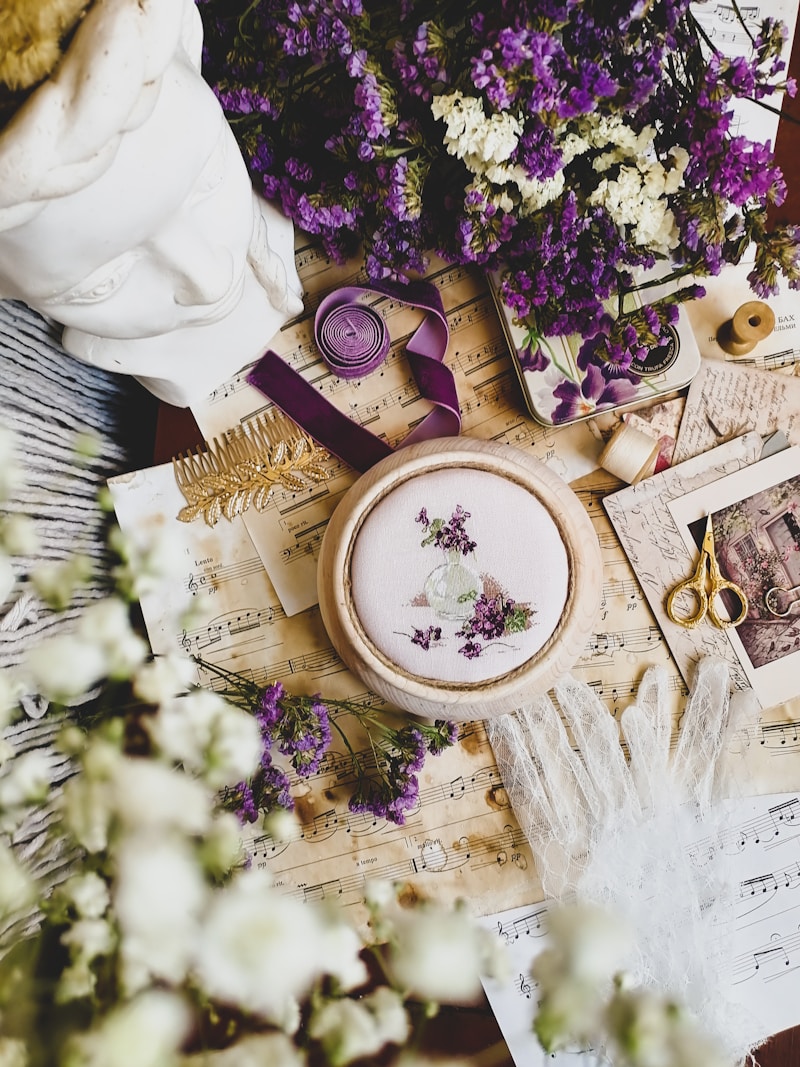Captivating Charm: The Art of Embroidery and Appliqués
When it comes to enhancing the aesthetic appeal of textiles, the world of craftsmanship often leads us to two remarkable techniques: embroidery and appliqués. These charming details have a rich history, serving not only as methods of decoration but also as expressions of culture and individuality. This article will delve into the fascinating world of embroidery and appliqués, exploring their origins, techniques, popularity in the fashion industry, and tips for incorporating them into your own designs.
Understanding Embroidery and Appliqués
At its core, embroidery is the art of decorating fabric using a needle to apply thread or yarn. It has been practiced for centuries, dating back to ancient civilizations across the globe. The techniques can range from simple stitches to intricate patterns, often depicting nature, geometric shapes, or cultural symbols. Embroidery can transform a plain garment into a stunning piece of art.
Appliqué, on the other hand, involves sewing a piece of fabric onto a larger base fabric to create a design or pattern. This technique adds depth and texture and is often used in quilting and home décor. The method allows for limitless creativity, as different fabrics, colors, and shapes can be combined to form unique designs.
The Rich History of Embroidery and Appliqués
The history of both embroidery and appliqués traces back to ancient times. For instance, archaeological findings indicate that embroidery was prevalent in early Egyptian society around 4000 BC. Similarly, appliqué techniques have been found in various cultures, including Native American textiles and traditional Asian garments. This heritage showcases how these art forms have transcended borders, adapting to different cultures while retaining their charm.
Global Popularity and Trends
Today, embroidery and appliqués are experiencing a resurgence in popularity, especially in the fashion industry. Renowned designers are continually incorporating these techniques into their collections, giving life to everything from high-end couture to everyday wear. Fashion shows worldwide feature garments adorned with stunning embroidery and distinctive appliqués that captivate audiences.
| Purpose | Embroidery | Appliqué |
| Decorative | Enhances the texture and detail of fabric. | Adds layers and different materials to the design. |
| Traditional Use | Often seen in cultural attire and ceremonial garments. | Frequently used in quilts and home décor elements. |
| Technique | Involves stitching various patterns onto the material. | Involves attaching pieces of fabric onto another fabric. |
| Customization | Can be tailored with initials, symbols, or motifs. | Offers versatility in design with mixed fabrics and shapes. |
Embroidery Techniques You Should Know
Various embroidery techniques cater to different styles and preferences. Here are a few popular methods:
- Cross-Stitch: A form of counted-thread embroidery that creates a grid-like pattern. This classic technique offers a homey feel.
- Blackwork: This style uses black thread to create intricate designs typically on white fabric, resulting in striking contrasts.
- Freehand Embroidery: In this method, artists create designs without a guiding pattern, allowing for free expression.
- Thread Painting: This technique uses machine embroidery thread to create a painted effect, giving designs a lifelike quality.
Creating with Appliqués: Key Techniques
When it comes to appliqués, several techniques can help you achieve stunning results:
- Raw Edge Appliqué: This method involves cutting out shapes and stitching them onto the base fabric with a straight or zigzag stitch, allowing the edges to fray for a casual look.
- Appliqué with a Fusible Web: This technique uses a fusible web to adhere the shapes onto the fabric before sewing, resulting in a clean, finished look.
- Reverse Appliqué: In this method, layers of fabric are stitched together, and the top layer is cut away to reveal the color beneath, creating unique designs.

Incorporating Embroidery and Appliqués into Fashion
Integrating these charming details into your wardrobe can elevate your style. Here are some tips:
- Personalize Your Garments: Consider adding your initials or a favorite quote using embroidery. This not only makes your clothing unique but also adds a personal touch.
- Mix Textures: Combine different fabrics and colors for appliqués to create a visually dynamic piece. This contrast can make a garment stand out.
- Accessorize: Use embroidery or appliqués on bags, hats, and shoes to enhance your overall look without overwhelming your outfit.
- Experiment with Home Décor: Use embroidery and appliqués in cushions, curtains, and tablecloths for a cozy, stylish atmosphere at home.
Common Questions About Embroidery and Appliqués
As you embark on your journey into the world of charming embroidery and appliqués, you might have a few questions:
How do I start learning embroidery?
Begin with basic stitches and gradually work your way up to more complex designs. There are numerous online tutorials and local workshops available to help you.
Can I combine both embroidery and appliqués in one design?
Absolutely! Combining these techniques can create stunning visuals and add depth to your work. Look for ways to layer and juxtapose the two for unique results.
What materials do I need to get started?
Essential materials include fabric, threads, needles, scissors, and any additional embellishments you wish to use. Specialty items like fusible web for appliqués might be useful too.
Conclusion: Embrace the Charm
Embroidery and appliqués offer more than just decoration; they provide a canvas for creativity and self-expression. Whether it’s a beautifully embroidered jacket or an intricately appliquéd tote bag, these techniques allow for personalization that resonates with our individuality. As you explore this enchanting world, remember to enjoy the process and let your creativity flow. With the right techniques and inspiration, your projects can become charming works of art that stand the test of time. Always remember to choose quality materials and practice patience, as mastery over these techniques can lead to incredible results. Happy stitching!